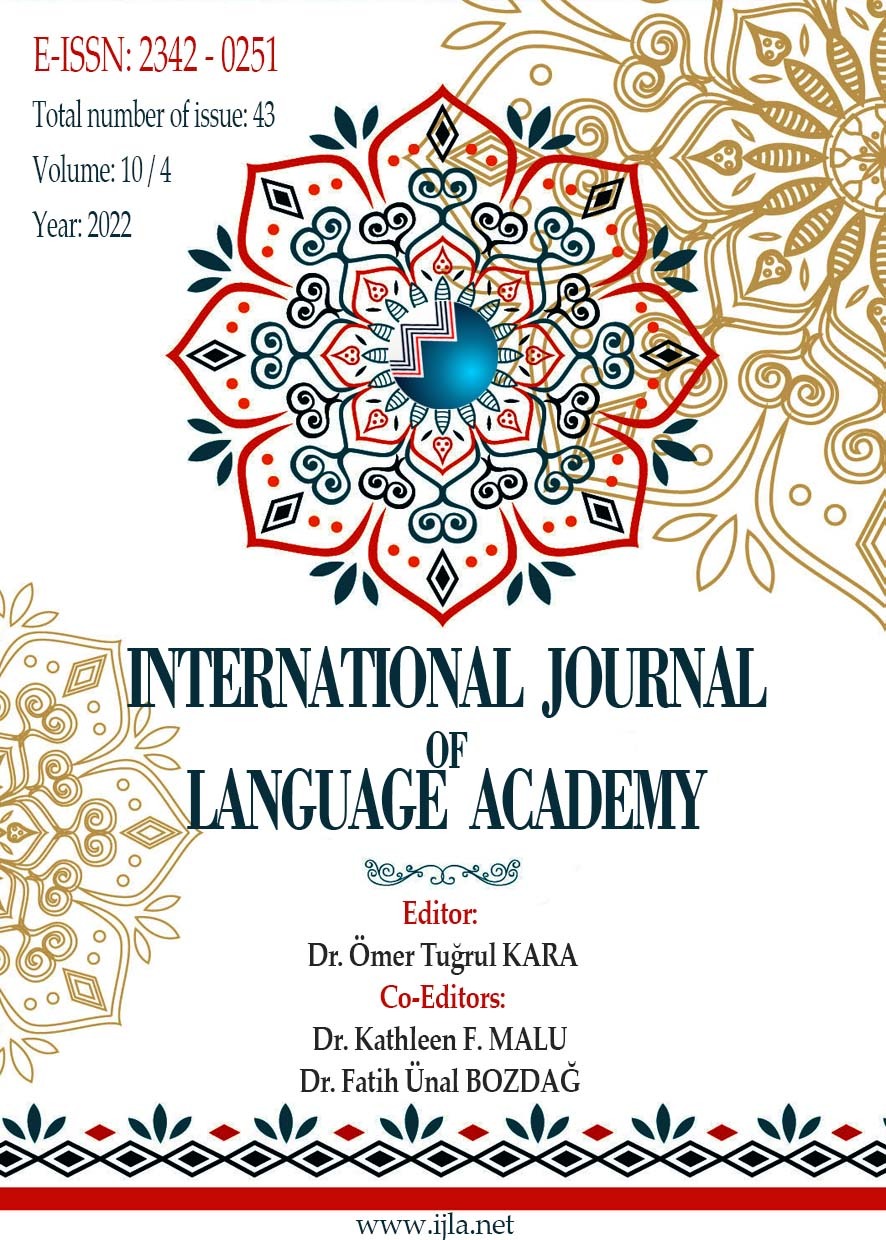The Literary Evocation of Loeb’s Theory of Universe in Tom Stoppard’s Rosencrantz and Guildenstern are Dead
Author :
Abstract
Keywords
Abstract
Revisiting Tom Stoppard’s masterpiece, Rosencrantz and Guildenstern are Dead, this article aims to show Stoppard’s grand design in light of Loeb’s theory of universe. According to Loeb’s claim, our universe is a product of a super design developed in a lab by some higher intelligent forms3. Although it sounds too theoretical and less convincing for now, one striking insinuation in his assumption, perhaps not deliberately given, is worthwhile to note: It rejects the existentialists’ notion of one’s “thrownness” into world, that is, it features a pre-programmed network in which one is genetically coded with a purpose to create some habitats in case of the loss of the present habitat as a possible result of facing apocalyptic scenarios. The evocation of St. Augustine’s concept of predestination in Loeb’s view seems to show that it prioritizes the predetermined matrix structured by more secular and scientific Gods, giving no space for contingency or chance. Long before Loeb’s sensational theory, though diametrically different in style, Tom Stoppard’s Rosencrantz and Guildenstern are Dead similarly features a predestined pattern in the textual universe, the structure of which had already been designed not by the aliens but Shakespeare. It is surprising to find that a playwright and a physicist living at different eras and sharing no common ground may come to adopt a similar view of design. Unlike the genetically coded beings in Loeb’s universe, a careful reader might catch the glimpse of the semiotically coded characters trapped in the universe of Shakespeare’s Hamlet. In this context, this article will revisit the fated universe of Rosencrantz and Guildenstern to show how Stoppard adopts a similar understanding of Loeb’s theory of predestined universe. It firstly discusses Tom Stoppard as a playwright, and then focuses on the inevitable fates of Rosencrantz and Guildenstern already predetermined by Shakespeare.
Keywords
- Babula, W. (1972). The play-life metaphor in Shakespeare and Stoppard. Modern Drama, 15(3), 279-290.
- Bloom, H. (Ed.). (2009). Tom Stoppard. Infobase Publishing.
- Brassell, T. (1985). Tom Stoppard: an Assessment. St. Martin’s Press.
- Bull, J. (2001). Tom Stoppard and politics. The Cambridge Companion to Tom Stoppard, 136-53.
- Delany, P. (1990). Tom Stoppard: The Moral vision of the major plays. Macmillan Press.
- Demastes, W. (2012). The Cambridge introduction to Tom Stoppard. Cambridge University Press.
- Diamond, E. (1986). Tom Stoppard by Thomas Whitaker. Comparative Drama, 20(1), 79- 81.
- Fleming, J. (2003). Stoppard's theatre: Finding order amid chaos. University of Texas
- Hubatschke, C. (2021). How to dance with robots. Machinic assemblages of desire: Deleuze and artistic research 3, 209. De Assis, P., & Giudici, P. (Eds.). (2000). Deleuze and artistic research: Machinic assemblages of desire. Leuven University Press.
- Jenkins, A. (1989). The theatre of Tom Stoppard. Cambridge University Press.
- Kelly, K. E., & Demastes, W. W. (1994). The Playwright and the professors: An interview with Tom Stoppard. South Central Review, 11(4), 1-14. JSTOR, https://doi.org/10.2307/3190110. Accessed 29 Sep. 2022.
- Lee, H. (2020). Tom Stoppard: A life. Faber & Faber.
- Loeb, A. (2021). “Was Our Universe Created in a Laboratory?” Scientific American. Access date: 13 Sep. 2022, https://www.scientificamerican.com.
- —. (2021). On the Possibility of an artificial origin for Oumuamua. arXiv preprint arXiv:2110.15213.
- —. (2021). Extraterrestrial: The first sign of intelligent life beyond earth. Houghton Mifflin.
- Londré, F. H. (1980). Beyond Absurdity: The Plays of Tom Stoppard by Victor L. Cahn. (Book Review) Comparative Drama, 14(2), 197-199.
- Maji, P. (2013). Absurdism in Tom Stoppard’s Rosencrantz and Guildenstern Are Dead. Galaxy, 2(6), 1-5.
- Oliver, W. I. (1963). Between absurdity and the Playwright. Educational Theatre Journal, 224-235.
- Roberts, P. (1978). Tom Stoppard: serious artist or siren?. Critical Quarterly, 20(3), 84-92.
- Sammells, N. (1987). Tom Stoppard: The Artist as Critic. Springer.
- Stoppard, T. (2007) Rosencrantz and Guildenstern are Dead. Grove/Atlantic Inc.





